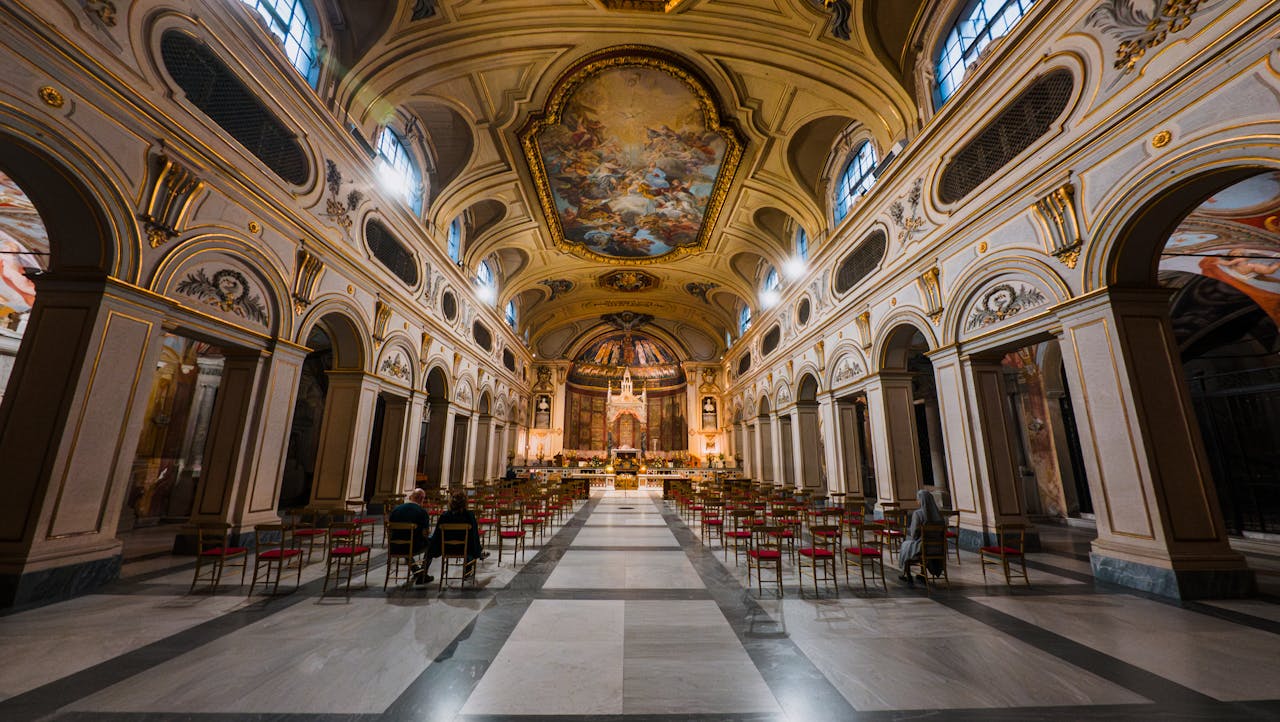The historic city of Canterbury, nestled in the heart of Kent, England, is home to a vast array of heritage buildings, each telling its own story of the past. From the stunning Canterbury Cathedral to the quaint 18th-century houses, every building sings a song of history that reverberates through the centuries. Yet, as time advances, so too does the need for conservation and restoration. This article will delve into the best methods for historical property restoration in Canterbury. It will explain the challenges faced in these projects and how experts handle them, keeping in mind the architectural integrity and history of the buildings.
Importance of Historical Property Restoration
Historical property restoration is an art. It’s a delicate balance between preserving the past and ensuring the building’s future. When we talk about restoration, it’s much more than a lick of paint or a few replaced tiles. It’s about understanding the fabric of the building, from the stone used in the original construction to the techniques employed by the builders of yesteryears.
Sujet a lire : What Are the Cybersecurity Risks for Smart Homes in London and How to Mitigate Them?
In Canterbury, with its rich tapestry of heritage buildings, restoration is about safeguarding the city’s history. It’s about ensuring that future generations can walk the cobbled streets and marvel at the architecture that has withstood the test of time.
The most vital aspect of any restoration project is respect for the original building. Experts must approach the work with a deep understanding of the building’s historical context, its architectural style, and its original materials and techniques.
A découvrir également : What Are the Best Practices for Documenting Property Conditions Before Renting in Glasgow?
Techniques Used in Historical Restoration
Historical restoration is a meticulous and demanding process. It requires a blend of traditional techniques and modern solutions to ensure a successful outcome.
Let’s take stonework as an example. The Canterbury Cathedral, a masterpiece of Gothic architecture, is primarily made of Caen stone, a light creamy-yellow Jurassic limestone. Over centuries, this stone can erode, and replacements must be carefully sourced and shaped to match the original.
Stone masons play a crucial role in the restoration process. In the case of the Canterbury Cathedral, they often employ traditional methods, such as hand-carving the stones. They also use modern techniques like three-dimensional scanning and Computer Numerical Control (CNC) machines to replicate intricate details.
Historical property restoration goes beyond stonework. It often involves intricate woodwork, plasterwork, and even stained glass windows. Each element requires specialist skills and a deep understanding of the property’s history.
The Role of Conservation in Restoration
While restoration is crucial, conservation is equally important. The main goal of conservation is to maintain the building’s historical integrity while ensuring its long-term survival.
Heritage conservationists in Canterbury have a great responsibility. They must ensure the city’s historic buildings are preserved for future generations to appreciate. This task includes regular maintenance, repairs, and sometimes even adaptation to modern uses.
Every project begins with a detailed survey of the building. This survey helps conservationists understand the property’s condition, its construction methods, and the materials used. It informs the conservation plan, highlighting what needs to be preserved, what may be restored, and what needs to be carefully replaced.
A conservation project isn’t just about the building itself. It’s also about the structure’s surroundings. The conservation of Canterbury’s historic properties often includes preserving the landscape around the buildings.
Challenges Faced During Restoration
Historical property restoration in Canterbury is not without challenges. Each project presents its own set of difficulties, from sourcing materials to adhering to strict conservation laws.
Often, the biggest challenge is finding the balance between preserving the building’s historical charm and ensuring it meets modern safety standards. For instance, a 16th-century house might require a new roof, but using modern materials could compromise its historic character. Experts must find a solution that respects both the house’s history and the safety of its future inhabitants.
There is also the issue of the ‘unknown’. As restoration work progresses, unexpected issues can be unearthed. Hidden structural problems, for instance, could drastically alter the course of the project, requiring additional resources and time.
Conclusion
In a city as steeped in history as Canterbury, the importance of historical property restoration cannot be overstated. Through careful conservation and restoration, the city’s past can continue to be a part of its future. By marrying traditional techniques with modern solutions, experts can ensure that the heritage buildings of Canterbury stand strong for centuries to come.
Remember, the aim of any restoration project should always be to respect and preserve the original building, ensuring that the essence of its history remains intact. As you walk through the historic streets of Canterbury, remember to appreciate the work and effort that goes into preserving the city’s architectural legacy.
The Role of Local Authorities and Organizations in Restoration
Local authorities and organizations play a crucial role in the restoration and conservation process in Canterbury. The city council, in conjunction with Historic England, helps set restoration guidelines and regulations. These bodies work tirelessly to ensure that the rich architectural heritage of Canterbury is preserved for future generations.
One of the main responsibilities of the local authorities is to ensure that restoration projects adhere to the strict conservation laws of the United Kingdom. These laws are put in place to protect the historical integrity of buildings, from Canterbury Cathedral to Saint Martin Church and Augustine Abbey. Without these regulations, many of the city’s treasured heritage buildings could lose their unique character.
Aside from local authorities, several organizations are committed to preserving Canterbury’s historical properties. These include the Canterbury Historical and Archaeological Society, The Canterbury Society, and the Canterbury Cathedral Trust. These entities often work closely with building restoration specialists to ensure the correct procedures and techniques are used.
Collaboration is key in these endeavours. Experts in diverse fields, from archaeologists who can trace the history of the site, to skilled craftsmen who can restore stained glass windows, all work together under a common goal. They aim to maintain the true essence of Canterbury’s architecture, one building at a time.
Restoration After Fire Damage
Fire damage presents a particularly challenging aspect of historical property restoration. In the past, Canterbury has seen some of its most prized buildings, like the Christ Church, suffer from severe fire damage. It takes a team of dedicated experts to carefully restore these structures to their former glory, without erasing the scars of the past.
The process begins with a thorough inspection to assess the extent of the fire damage. This allows the team to formulate a detailed plan for restoration. In some cases, natural stone such as that used in the Canterbury Cathedral may have to be replaced due to fire damage. The sourcing and shaping of this stone, to match the original as closely as possible, can be a time-consuming and laborious task.
However, the challenge does not end with the physical restoration. There is also the emotional aspect of restoring a building that holds significant historical and sentimental value. A fire can leave more than just physical damage; it can leave a wound in the heart of the community.
Yet, with each restored building, Canterbury continues to rise from the ashes, a testament to the resilience of its people and the enduring charm of its architectural heritage.
Conclusion
Historical property restoration in Canterbury is a delicate, intricate art. From maintaining the authenticity of the Canterbury Cathedral to preserving the beauty of the quaint buildings that dot the city, every restoration project is a testament to Canterbury’s rich history.
Local authorities, organizations, and dedicated individuals all play vital roles in this process. Whether it’s dealing with fire damage or ensuring adherence to strict conservation laws, these teams work tirelessly to ensure the city’s history is preserved for future generations.
So, next time you walk past the stained glass windows of the Christ Church or marvel at the natural stone used in Augustine Abbey, take a moment to appreciate the immense effort that goes into preserving Canterbury’s architectural legacy. Remember, each restored building in Canterbury isn’t just a piece of the past, but a part of the city’s future as well.
Feel free to check our website to answer questions you might have about building conservation in the United Kingdom, particularly in Canterbury, Kent. It’s a fascinating journey through time, stone, and history, and we’re here to guide you through it.











